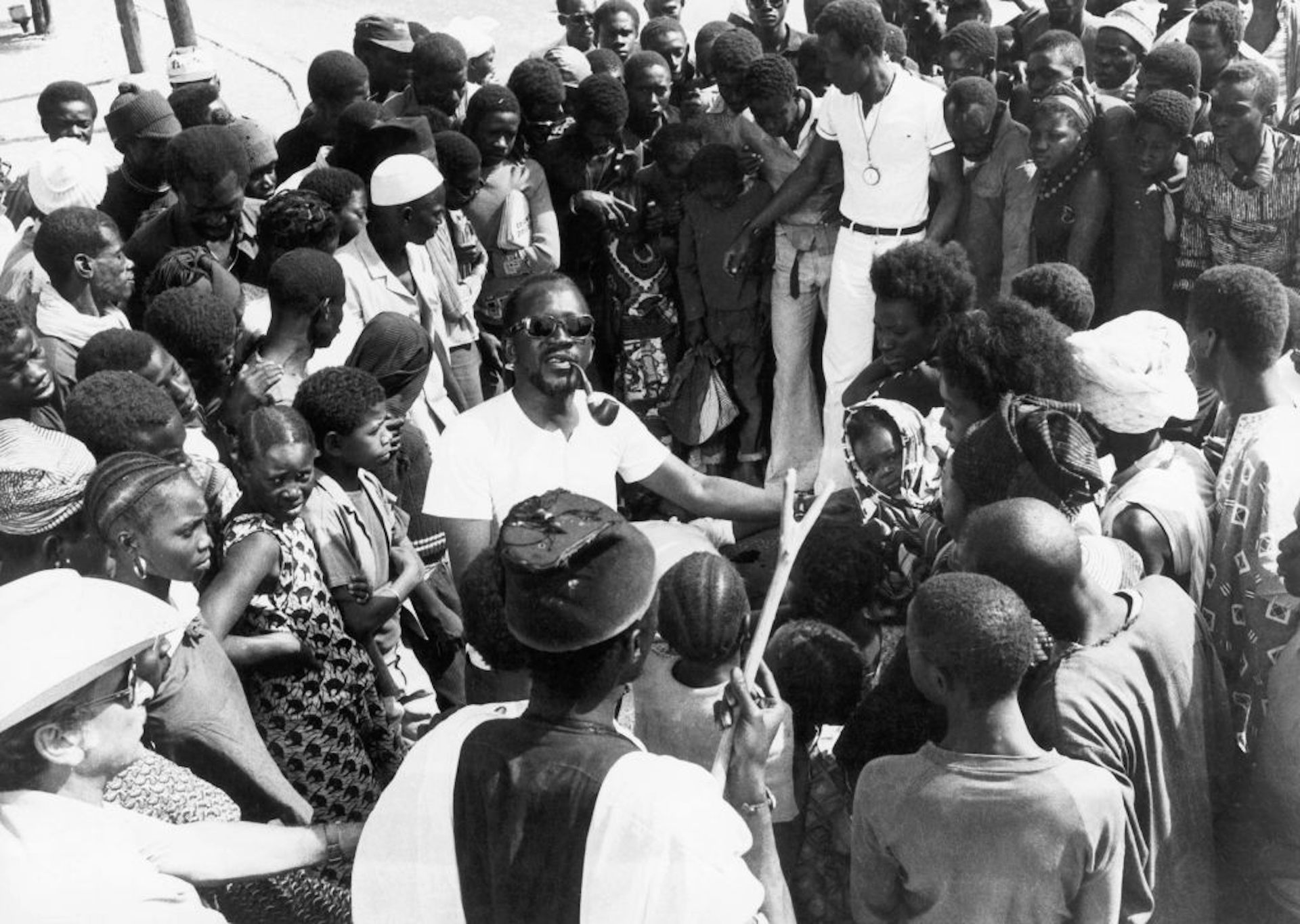
1 January 2023 marked the centenary of the birth of Ousmane Sembène, the Senegalese novelist and filmmaker hailed as the “father of African cinema”. Over the course of five decades Sembène published 10 books and directed 12 films across three distinct periods. He has been celebrated for his beautifully crafted political works, which range in style from the psychological realism of Black Girl in 1966 to the biting satire of Xala (The Curse) in 1974.
Since his death in 2007, Sembène’s status as a pioneer has been further cemented. But the sheer variety and richness of his work, his ability to reinvent himself as an artist, has often been overlooked. On the occasion of his centenary, it’s worth looking at what made him such a remarkable creative presence.
The novelist: 1956-1960
Unlike many of his literary peers, Sembène did not come to writing via the colonial education system. In fact, he left school early and was largely self-educated. He was born into the minority Lebou community in the southern Senegalese region of Casamance. His father was a fisherman. He later moved to the colonial capital of Dakar.
After serving in the French Army in the Second World War, he moved to France in 1946. Employed as a dockworker in Marseilles in the 1950s, he developed a love of literature through the library of the communist-affiliated trade union, the Confédération Générale du Travail. His first novel, The Black Docker (1956), self-consciously explores the difficulties faced by a working-class black writer seeking to become a published author.
Sembène’s most celebrated novel, God’s Bits of Wood (1960), is a fictionalised account of the 1947-1948 railway strike in colonial French West Africa. A sweeping epic, set across three different locations with a host of characters, the book illustrates Sembène’s Marxist, pan-Africanist vision of anti-colonialism. He believed the overthrow of colonial powers could best be achieved through alliances between workers across national and ethnic divides.

Seyllou/AFP via Getty Images
God’s Bits of Wood is often described as the classic Sembène text, politically committed and realist in style. However, it proved to be the high water mark of his exploration of literary realism.
In 1960, he returned to Africa after more than a decade in Europe to tour a continent emerging from colonial domination. He famously stated that, sitting on the banks of the Congo River watching the teeming masses, most of whom could not read or write, he experienced an epiphany. If his novels were inaccessible to many Africans, cinema was the answer. He set about becoming a filmmaker.
Novelist and filmmaker: 1962-1976
After studying cinema in Moscow, Sembène directed his first short film, Borom Sarret (The Wagoner), in 1962. A day in the life of a lowly cart driver, the film provides a stinging critique of the failures of independence in Senegal, cast as the transfer of power from one ruling elite to another. Like most Francophone African countries, Senegal had gained its independence in 1960. It would be governed for the next two decades by the Socialist Party, led by the poet Léopold Sédar Senghor, who sought to maintain close political and cultural ties to France.
Between 1962 and 1976, Sembène published four books and directed eight films, works of an incredible aesthetic diversity. Indeed, this may rank as the single richest period of artistic productivity of any African writer or director in the postcolonial era. Sembène chalked up a series of pioneering firsts by a black African director: first film made in Africa (Borom Sarret), first feature film (Black Girl), first film in an African language (Mandabi).
He began to gain international renown but there was little opportunity to see his work at home. Mandabi (The Money Order), for example, won a prize at the Venice Film Festival but was not released in Senegal, where it was criticised by the government for presenting a negative vision of the country.
Between 1971 and 1976, Sembène made his most ambitious trilogy of films: Emitaï, Xala and Ceddo. They were driven by strong storylines. But most important to Sembène was a film’s ability to condense social, political and historical realities into a series of searing images. These often blurred the boundaries of space and time.
In Ceddo he collapsed several centuries of history into the life of one Senegalese village, leading to a struggle for power between animism, Christianity and Islam. The latter asserts its dominance through the barrel of a gun, a controversial stance in a country that was over 90% Muslim by then. Ceddo was banned by Sembène’s arch-enemy, Senghor. He would not make another film for over a decade.
Wilderness years to a late flowering: 1976-2004
After a decade spent largely in the creative wilderness, Sembène experienced a late flowering from the end of the 1980s onwards. This saw him reach a new generation of audiences. His later works were less ambitious aesthetically but no less powerful.
His masterpiece Moolaadé (2004) was a scathing denunciation of female genital mutilation in rural West Africa. In it, the forces of change oppose conservative, patriarchal authority. The images of the women’s radios being burned by the men in front of the village mosque are a stark visual representation of this conflict. As in his earlier films, what matters is fundamental power relationships, not a closely observed realism that depicts the world as it is but cannot imagine how to change it.
Sembène today
Since Sembène’s death, we have learned more about his life and career through the painstaking work of his biographer Samba Gadjigo, who also co-created the documentary Sembène! (2015). Sometimes what the Senegalese writer and academic learned has been negative – not least Sembène’s “theft” of the idea for the film Camp de Thiaroye (1988) from two young Senegalese creators. But that’s a necessary part of overcoming the overly reverential accounts that sometimes pass for discussion of Sembène’s career.
The recent opening of the Sembène archive at the University of Indiana offers scholars further opportunity to deepen their understanding of his life and work.
Those unfamiliar with Sembène should grab a copy of God’s Bits of Wood or find recent DVD editions of classic films such as Black Girl or Xala (whose opening sequence is, in my view, among the best five minutes in all of African cinema). My personal favourite is his tragi-comedy Mandabi, recently re-released in a newly restored print. Under the guise of a simple story about a poor man trying to cash a money order, Sembène weaves a brilliant critique of capitalism and the power of money to undermine social and family bonds.
In Paris, the Cinémathèque Française is marking the centenary of Sembène’s birth with a retrospective of his films.
Sembène’s films still matter today not only because of the ongoing relevance of many of the social and political issues they dealt with. But also because he was able to create a film language that spoke powerfully to audiences around the world.
He forged a career that lasted five decades when many of his contemporaries struggled to make more than a handful of films. That creativity and longevity helped to shape African cinema in complex ways: contemporary directors may follow in Sembène’s footsteps or choose to reject his politically committed style – but his legacy cannot be ignored.![]()
David Murphy, Professor of French and Postcolonial Studies, University of Strathclyde
This article is republished from The Conversation under a Creative Commons license.


Leave a Reply